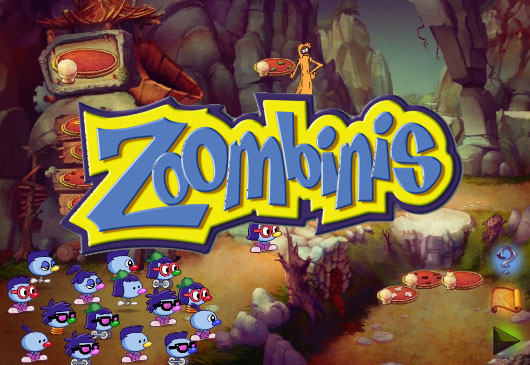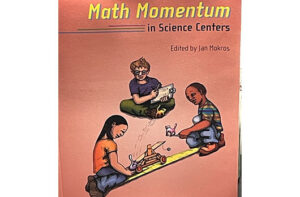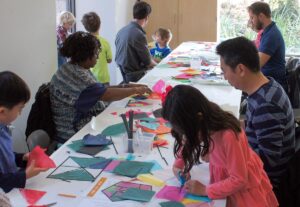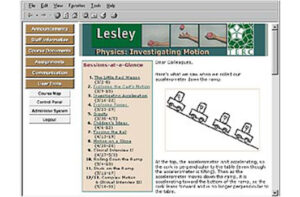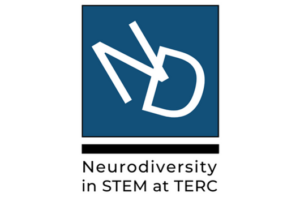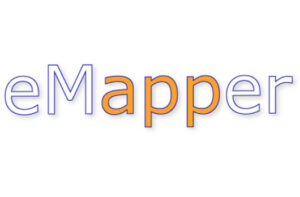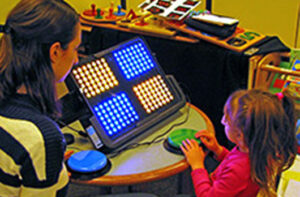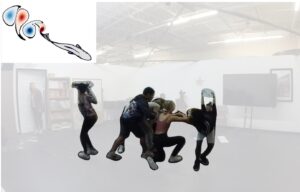Revealing the Invisible
Data-Intensive Research Using Cognitive, Psychological, and Physiological Measures to Optimize STEM Learning
Lead Staff:
Jodi Asbell-ClarkeElizabeth Rowe
SummaryNew technologies (including biometry and neuro-imaging) provide new opportunities to unobtrusively measure student engagement and learning in digital learning environments. This project—developed through the NSF Ideas Lab on Data-Intensive Research to Improve Teaching and Learning October 2014—utilized these technologies to provide foundational knowledge of the ways in which measures of implicit learning might be linked to explicit learning to develop educationally relevant games that are adaptive to diverse learners.
Investigators from TERC, Landmark College, and the Massachusetts Institute of Technology collaborated to examine the relationships among:
- patterns of play in a digital game (“Impulse”);
- student attention (measured from eye- and head-tracking devices); and
- student learning about Newton’s first and second laws.
The researchers collected measures of student engagement and learning outcomes embedded in the game. Subjects were comprised of a neurodiverse group of students including those with Attention Deficit Hyperactivity Disorder and/or Autism Spectrum Disorder.
Using a combination of education data mining with game log data and eye-tracking data, the researchers developed a model of visual attention and patterns of play, examining the extent to which eye movements are allocated strategically to objects of relevance to the current game state as a student learns in the game. They then linked the initial model with measures of student engagement and conceptual understanding of relevant physical science constructs to refine the model.
The refined model is used to develop a modified game based on the players’ attention, and a prototype of the modified game will be tested. The final phase of the research was within-subject design with the adaptive version versus the normal version of the game across learners with different profiles of disability.
VideosRelated PresentationsAlmeda, M., Rowe, E., Asbell-Clarke, J., Bardar, E., & Gasca, S. (2019, October). Teachers Leveraging Game-Based Implicit STEM Learning in Classrooms. Poster to be presented at the Technology, Mind, and Society conference, Washington D.C.
Almeda, M., Rowe, E., Asbell-Clarke, J., Baker, R., Scruggs, R., Bardar, E., & Gasca, S. (2019, October). Modeling Implicit Computational Thinking in Zoombini’s Mudball Wall Gameplay. Paper to be presented at the Technology, Mind, and Society conference, Washington D.C.
Rowe, E., Asbell-Clarke, J., & Baker, R. (2019, April) Game-based measures of implicit learning. Structured poster session organized by Y.J. Kim, Game-Based Assessment: How Has the Field Matured over the Past 10 years? AERA Annual Meeting, Toronto.
Show More
Show Less
Asbell-Clarke, J., Rowe, E., Bardar, E., & Gasca, S. (2018, August). Zoombinis: Bridging Implicit to Explicit Computational Thinking. Working paper presented at the 1st Connected Learning Summit, Cambridge, MA.
Rowe, E., Asbell-Clarke, J., Baker, R., Gasca, S., Bardar, E., & Scruggs, R. (2018, April). Labeling Implicit Computational Thinking in Pizza Pass Gameplay. Late-breaking work presented at the ACM SIGCHI Conference on Human Factors in Computing Systems (CHI 18), Montreal.
Shute, V. J., Sun, C., & Asbell-Clarke, J. “Demystifying computational thinking.,” Educational Research Review
Rowe, Elizabeth and Asbell-Clarke, Jodi and Gasca, Santiago and Cunningham, Kathryn. “Assessing implicit computational thinking in zoombinis gameplay,” Proceedings of the 12th International Conference on the Foundations of Digital Games, 2017. doi:10.1145/3102071.3106352 Citation details
Rowe, Elizabeth and Asbell-Clarke, Jodi and Cunningham, Kathryn and Gasca, Santiago. “Assessing Implicit Computational Thinking in Zoombinis Gameplay: Pizza Pass, Fleens & Bubblewonder Abyss,” Extended Abstracts Publication of the Annual Symposium on Computer-Human Interaction in Play, 2017. doi:10.1145/3130859.3131294 Citation details
New technologies (including biometry and neuro-imaging) provide new opportunities to unobtrusively measure student engagement and learning in digital learning environments. This project—developed through the NSF Ideas Lab on Data-Intensive Research to Improve Teaching and Learning October 2014—utilized these technologies to provide foundational knowledge of the ways in which measures of implicit learning might be linked to explicit learning to develop educationally relevant games that are adaptive to diverse learners.
Investigators from TERC, Landmark College, and the Massachusetts Institute of Technology collaborated to examine the relationships among:
- patterns of play in a digital game (“Impulse”);
- student attention (measured from eye- and head-tracking devices); and
- student learning about Newton’s first and second laws.
The researchers collected measures of student engagement and learning outcomes embedded in the game. Subjects were comprised of a neurodiverse group of students including those with Attention Deficit Hyperactivity Disorder and/or Autism Spectrum Disorder.
Using a combination of education data mining with game log data and eye-tracking data, the researchers developed a model of visual attention and patterns of play, examining the extent to which eye movements are allocated strategically to objects of relevance to the current game state as a student learns in the game. They then linked the initial model with measures of student engagement and conceptual understanding of relevant physical science constructs to refine the model.
The refined model is used to develop a modified game based on the players’ attention, and a prototype of the modified game will be tested. The final phase of the research was within-subject design with the adaptive version versus the normal version of the game across learners with different profiles of disability.
Related PresentationsAlmeda, M., Rowe, E., Asbell-Clarke, J., Bardar, E., & Gasca, S. (2019, October). Teachers Leveraging Game-Based Implicit STEM Learning in Classrooms. Poster to be presented at the Technology, Mind, and Society conference, Washington D.C.
Almeda, M., Rowe, E., Asbell-Clarke, J., Baker, R., Scruggs, R., Bardar, E., & Gasca, S. (2019, October). Modeling Implicit Computational Thinking in Zoombini’s Mudball Wall Gameplay. Paper to be presented at the Technology, Mind, and Society conference, Washington D.C.
Rowe, E., Asbell-Clarke, J., & Baker, R. (2019, April) Game-based measures of implicit learning. Structured poster session organized by Y.J. Kim, Game-Based Assessment: How Has the Field Matured over the Past 10 years? AERA Annual Meeting, Toronto.
Show More
Show Less
Asbell-Clarke, J., Rowe, E., Bardar, E., & Gasca, S. (2018, August). Zoombinis: Bridging Implicit to Explicit Computational Thinking. Working paper presented at the 1st Connected Learning Summit, Cambridge, MA.
Rowe, E., Asbell-Clarke, J., Baker, R., Gasca, S., Bardar, E., & Scruggs, R. (2018, April). Labeling Implicit Computational Thinking in Pizza Pass Gameplay. Late-breaking work presented at the ACM SIGCHI Conference on Human Factors in Computing Systems (CHI 18), Montreal.
Shute, V. J., Sun, C., & Asbell-Clarke, J. “Demystifying computational thinking.,” Educational Research Review
Rowe, Elizabeth and Asbell-Clarke, Jodi and Gasca, Santiago and Cunningham, Kathryn. “Assessing implicit computational thinking in zoombinis gameplay,” Proceedings of the 12th International Conference on the Foundations of Digital Games, 2017. doi:10.1145/3102071.3106352 Citation details
Rowe, Elizabeth and Asbell-Clarke, Jodi and Cunningham, Kathryn and Gasca, Santiago. “Assessing Implicit Computational Thinking in Zoombinis Gameplay: Pizza Pass, Fleens & Bubblewonder Abyss,” Extended Abstracts Publication of the Annual Symposium on Computer-Human Interaction in Play, 2017. doi:10.1145/3130859.3131294 Citation details
Almeda, M., Rowe, E., Asbell-Clarke, J., Bardar, E., & Gasca, S. (2019, October). Teachers Leveraging Game-Based Implicit STEM Learning in Classrooms. Poster to be presented at the Technology, Mind, and Society conference, Washington D.C.
Almeda, M., Rowe, E., Asbell-Clarke, J., Baker, R., Scruggs, R., Bardar, E., & Gasca, S. (2019, October). Modeling Implicit Computational Thinking in Zoombini’s Mudball Wall Gameplay. Paper to be presented at the Technology, Mind, and Society conference, Washington D.C.
Rowe, E., Asbell-Clarke, J., & Baker, R. (2019, April) Game-based measures of implicit learning. Structured poster session organized by Y.J. Kim, Game-Based Assessment: How Has the Field Matured over the Past 10 years? AERA Annual Meeting, Toronto.
Asbell-Clarke, J., Rowe, E., Bardar, E., & Gasca, S. (2018, August). Zoombinis: Bridging Implicit to Explicit Computational Thinking. Working paper presented at the 1st Connected Learning Summit, Cambridge, MA.
Rowe, E., Asbell-Clarke, J., Baker, R., Gasca, S., Bardar, E., & Scruggs, R. (2018, April). Labeling Implicit Computational Thinking in Pizza Pass Gameplay. Late-breaking work presented at the ACM SIGCHI Conference on Human Factors in Computing Systems (CHI 18), Montreal.
Shute, V. J., Sun, C., & Asbell-Clarke, J. “Demystifying computational thinking.,” Educational Research Review
Rowe, Elizabeth and Asbell-Clarke, Jodi and Gasca, Santiago and Cunningham, Kathryn. “Assessing implicit computational thinking in zoombinis gameplay,” Proceedings of the 12th International Conference on the Foundations of Digital Games, 2017. doi:10.1145/3102071.3106352 Citation details
Rowe, Elizabeth and Asbell-Clarke, Jodi and Cunningham, Kathryn and Gasca, Santiago. “Assessing Implicit Computational Thinking in Zoombinis Gameplay: Pizza Pass, Fleens & Bubblewonder Abyss,” Extended Abstracts Publication of the Annual Symposium on Computer-Human Interaction in Play, 2017. doi:10.1145/3130859.3131294 Citation details
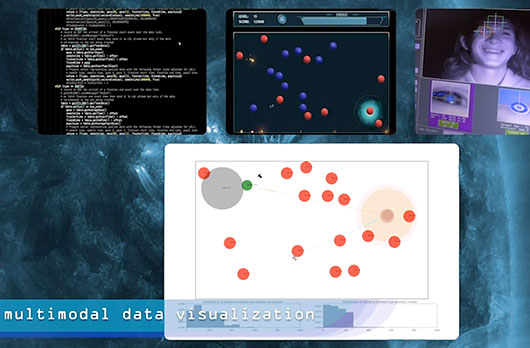
Funder:
National Science Foundation
Award Number:
1417967
Dates:
Ended 8/2014
Share This Page:
